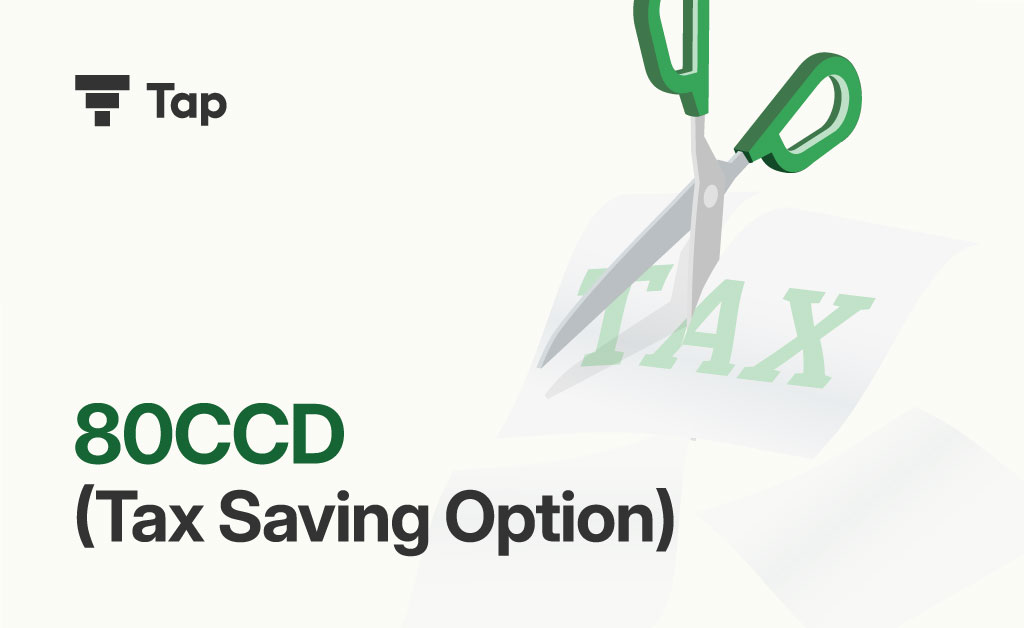Maximize Your Tax Savings with Section 80CCD: A Complete Guide

Introduction to Section 80CCD
Section 80CCD of the Income Tax Act, 1961, is a crucial provision for individuals looking to save on taxes while investing for their future. It primarily focuses on contributions to the National Pension System (NPS) and Atal Pension Yojana (APY). These schemes aim to provide financial security during retirement and encourage long-term savings among citizens.
Understanding 80CCD(1)
Section 80CCD(1) allows individuals to claim a deduction for contributions made to the NPS or APY. This subsection is applicable to all individuals, including salaried employees and self-employed persons. The maximum deduction under this section is limited to 10% of the salary (basic + dearness allowance) for salaried individuals and 20% of gross total income for self-employed individuals, subject to an overall cap of ₹1.5 lakh under Section 80C, 80CCC, and 80CCD(1) combined.
Exploring 80CCD(1B)
Introduced in the Budget 2015, Section 80CCD(1B) provides an additional deduction of up to ₹50,000 for contributions made to the NPS. This deduction is over and above the ₹1.5 lakh limit under Section 80C. It aims to encourage more individuals to invest in the NPS, enhancing their retirement savings.
The Role of 80CCD(2)
Section 80CCD(2) pertains to the contributions made by an employer towards an employee’s NPS account. The maximum deduction available under this section is 10% of the employee’s salary (basic + dearness allowance). This benefit is over and above the limits mentioned in Section 80CCD(1) and 80CCD(1B), making it an attractive option for salaried individuals to enhance their tax savings with employer contributions.
80CCD Deduction: Key Points
- Eligibility: All individuals, including salaried and self-employed, can claim deductions under Section 80CCD.
- Contribution Limits:
- 80CCD(1): Maximum deduction of 10% of salary for salaried and 20% of gross total income for self-employed, subject to ₹1.5 lakh limit under Section 80C, 80CCC, and 80CCD(1).
- 80CCD(1B): Additional deduction of ₹50,000 for contributions to NPS.
- 80CCD(2): Employer’s contribution up to 10% of salary (basic + dearness allowance), without any upper limit, can be claimed as a deduction.
- Investment Schemes: Contributions can be made to the National Pension System (NPS) and Atal Pension Yojana (APY).
Benefits of Investing Under Section 80CCD
- Tax Savings: The primary benefit of investing under Section 80CCD is the potential for significant tax savings. By claiming deductions under 80CCD(1), 80CCD(1B), and 80CCD(2), individuals can lower their taxable income substantially.
- Retirement Security: NPS and APY are designed to provide financial security during retirement. Regular contributions to these schemes ensure a steady income post-retirement.
- Additional Employer Benefits: Section 80CCD(2) allows employees to benefit from employer contributions, further enhancing their retirement corpus without additional tax liability.
How to Claim Deductions Under Section 80CCD
- For Salaried Employees:
- Contributions to NPS can be made directly from the salary.
- Employer contributions should be included in the salary structure to avail benefits under 80CCD(2).
- Ensure the total contribution details are accurately reflected in Form 16.
- For Self-Employed Individuals:
- Contributions to NPS can be made directly to the NPS account.
- Keep records of all contributions made during the financial year.
- While filing income tax returns, include the details of contributions under Section 80CCD(1) and 80CCD(1B).
Examples of 80CCD Tax Calculation
Example 1: Salaried Individual
Mr. Sharma, a salaried individual, has a basic salary of ₹5,00,000 and dearness allowance of ₹1,00,000. He contributes ₹60,000 to NPS. His employer also contributes ₹60,000 to his NPS account.
- 80CCD(1) Deduction:
- 10% of (₹5,00,000 + ₹1,00,000) = ₹60,000
- Maximum limit under 80C, 80CCC, and 80CCD(1) = ₹1,50,000
- 80CCD(1B) Deduction:
- Additional ₹50,000
- 80CCD(2) Deduction:
- Employer’s contribution = ₹60,000 (10% of ₹6,00,000)
Total Deduction: ₹60,000 (80CCD(1)) + ₹50,000 (80CCD(1B)) + ₹60,000 (80CCD(2)) = ₹1,70,000
Example 2: Self-Employed Individual
Ms. Rani, a self-employed individual, has a gross total income of ₹10,00,000. She contributes ₹1,00,000 to NPS.
- 80CCD(1) Deduction:
- 20% of ₹10,00,000 = ₹2,00,000
- Maximum limit under 80C, 80CCC, and 80CCD(1) = ₹1,50,000
- 80CCD(1B) Deduction:
- Additional ₹50,000
Total Deduction: ₹1,50,000 (80CCD(1)) + ₹50,000 (80CCD(1B)) = ₹2,00,000
FAQs On 80CCD:
1. What is the full form of NPS?
- The full form of NPS is the National Pension System.
2. Can both salaried and self-employed individuals claim deductions under Section 80CCD?
- Yes, both salaried and self-employed individuals can claim deductions under Section 80CCD.
3. What is the maximum deduction available under Section 80CCD?
- The maximum deduction under Section 80CCD(1) is ₹1.5 lakh, and an additional ₹50,000 under Section 80CCD(1B). There is no upper limit for employer contributions under Section 80CCD(2).
4. Are employer contributions under Section 80CCD(2) taxable?
- No, employer contributions up to 10% of salary (basic + dearness allowance) under Section 80CCD(2) are not taxable.
5. How can I invest in NPS?
- You can invest in NPS through the official NPS website, authorized banks, and financial institutions.
6. Is there a lock-in period for NPS investments?
- Yes, the lock-in period for NPS investments lasts until the age of 60, with partial withdrawals allowed under specific conditions.
Conclusion
Section 80CCD offers a powerful avenue for individuals to save on taxes while securing their financial future through retirement planning. By understanding and leveraging the benefits of 80CCD(1), 80CCD(1B), and 80CCD(2), taxpayers can significantly enhance their savings and ensure a comfortable retirement. Investing in the NPS and APY not only provides immediate tax benefits but also promotes disciplined long-term savings, contributing to overall financial well-being.
By making informed investment decisions and utilizing available tax deductions, individuals can make the most of the provisions under Section 80CCD and achieve their financial goals efficiently.
